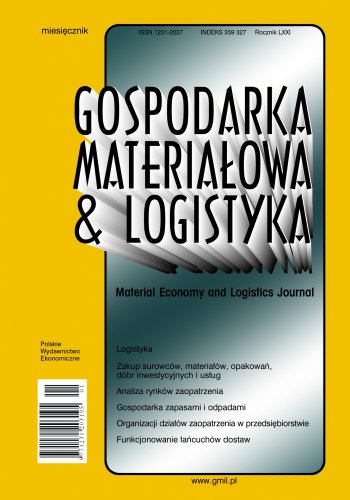Municipal land use development policy as a factor inducing spatial disorientation in aviation
Recently the aviation industry is growing faster than it was forecasted. Polish airport mostly have their origins in early 20th Century, and most of them were constructed for military purposes. Over the time the airports were developed within the given area without anticipating limitations of urban space. Presently, spatial development of most airports is seriously hindered due to dynamic expansion of urban development. It has reached the point where both the airport and the city suffocate each other's territorial expansion. Cohabitation of urban space and airports creates a threat of the phenomenon of spatial disorientation. The present article discusses the problem faced by pilots experiencing spatial disorientation which is a threat to aviation operations safety. In fact, most cases regarding spatial disorientation are provoked by incoherent spatial management and the airport location within the physical space. Conclusions are drawn based on the research carried out where pilots with different backgrounds and levels of experience expressed their opinions on the causes of spatial disorientation related with the location of the airport in the urban area.
References
Bibliografia/References
Books:
Beaty, D. (1995). The naked pilot. Ramsbury: The Crowood Press Ltd.
Craig, P.A. (2013). The killing zone. How and why pilots die, New York: The McGraw — Hill.
Journal articles:
Aydin, Y., & Kaltenbach, M. (2007). Noise perception, heart rate and blood pressure in relation to aircraft noise in the vicinity of the Frankfurt airport, Clinical Research in Cardiology, 96(6), 347–358. https://doi.org/10.1007/s00392-007-0507-y.
Babisch, W. & Van Kamp, I. (2009). Exposure-response relationship of the association between aircraft noise and the risk of hypertension, Noise and Health, 11(44), 161–168. https://doi.org/10.4103/1463-1741.53363
Brook, R. D., Rajagopalan, S., Pope, C. A., Brook, J. R., Bhatnagar, A., Diez-Roux, A. V., ... & Peters, A. (2010). Particulate matter air pollution and cardiovascular disease, Circulation, 121(21), 2331–2378. https://doi.org/10.1161/cir.0b013e3181dbece1
Cohen, J. P. & Coughlin, C. C. (2008). Spatial hedonic models of airport noise, proximity, and housing prices, Journal of Regional Science, 48(5), 859-878. https://doi.org/10.1111/j.1467-9787.2008.00569.x
Fidell, S. & Silvati, L. (1991). An assessment of the effect of residential acoustic insulation on prevalence of annoyance in an airport community. The Journal of the Acoustical Society of America, 89(1), 244–247. https://doi.org/10.1121/1.400506
Girvin, R. (2009). Aircraft noise-abatement and mitigation strategies. Journal of Air Transport Management, 15(1), 14–22. https://doi.org/10.1016/j.jairtraman.2008.09.012
Huss, A., Spoerri, A., Egger, M., Röösli, M. & Swiss National Cohort Study Group (2010). Aircraft noise, air pollution, and mortality from myocardial infarction, Epidemiology, 21(6), 829–836.
Postorino, M. N., & Mantecchini, L. (2016). A systematic approach to assess the effectiveness of airport noise mitigation strategies. Journal of Air Transport Management, 50, 71–82.
Short, N., LeBlanc, A. M., Sladen, W., Oldenborger, G., Mathon- Dufour, V. & Brisco, B. (2014). RADARSAT-2 D-InSAR for ground displacement in permafrost terrain, validation from Iqaluit Airport, Baffin Island, Canada, Remote Sensing of Environment, 141, 40–51.https://doi.org/10.1016/j.rse.2013.10.016
Visser, H. G., & Wijnen, R. A. (2001). Optimization of noise abatement departure trajectories. Journal of Aircraft, 38(4), 620–627 https://doi.org/10.2514/2.2838
Journal online articles:
Ahlfeldt, G. M., & Maennig, W. (2011). Homeownership and nimbyism: a spatial analysis of airport effects. Spatial Economics Research Centre, LSE (No. 0085). https://ideas.repec.org/p/cep/sercdp/0085.html (26.04.2020)
Antunano, M. J., Medical Facts for Pilots, Federal Aviation Administration, Civil Aerospace Medical Institute, AM-400-03/1. https://www.faa.gov/pilots/safety/pilotsafetybrochures/media/spatiald.pdf (25.04.2020).
Kirkham, W. R., Collins, W. E., Grape, P. M., Simpson, J. M., & Wallace, T. F. (1978). Spatial disorientation in general aviation accidents. Federal Aviation Administration Washington Dc Office Of Aviation Medicine. No. FAA-AM-78-13. https://apps.dtic.mil/ docs/citations/ADA053230 (25.04.2019). https://doi.org/10.1037/e517062009-001.
Pędziwiatr, W. (2010). Infrastruktura lotniskowa w Polsce: retrospekcja, teraźniejszość, perspektywy. Zeszyty Naukowe Uniwersytetu Szczecińskiego. Ekonomiczne Problemy Usług, (52 Potencjał turystyczny. Zagadnienia przestrzenne), 535–544. http://bazekon.icm.edu.pl/bazekon/element/bwmeta1.element.ekon-element-000171362879 (24.04.2020)
Conference materials:
Weiszer, M., Chen, J. & Stewart, P. (2015). Preference-based evolutionary algorithm for airport runway scheduling and ground movement optimization, conference materials from Intelligent Transportation Systems (ITSC) 2015 IEEE 18th International Conference on September 2015, Las Palmas, Spain, 2078-2083.
Patents:
Schwab, C. E., Rost, D. P., Hackenberg, W. & Holcombe, P. (1985). Method and apparatus for monitoring vehicle ground movement in the vicinity of an airport, U.S. Patent No. 4,516,125, U.S. Patent and Trademark Office, Washington DC.
Law provisions:
Ustawa z 21.08.1997 r. o gospodarce nieruchomościami (Dz.U. 2016 poz. 2147).
Ustawa z 27.03.2003 r. o planowaniu i zagospodarowaniu przestrzennym (Dz.U. 2003 nr 80 poz. 717).
Ustawa z 7.07.1994 r. o zagospodarowaniu przestrzennym (Dz. U.2001 nr 15 poz. 139).

